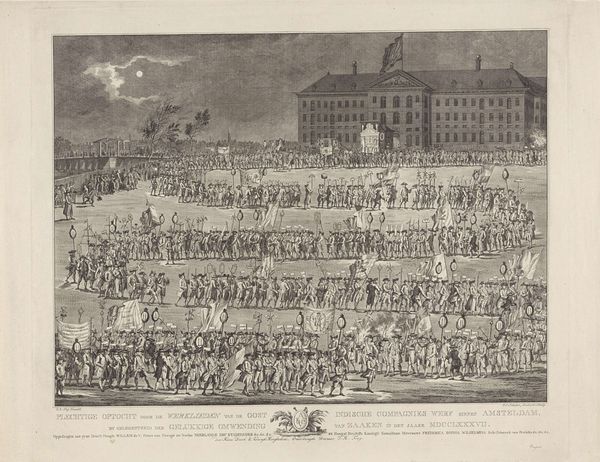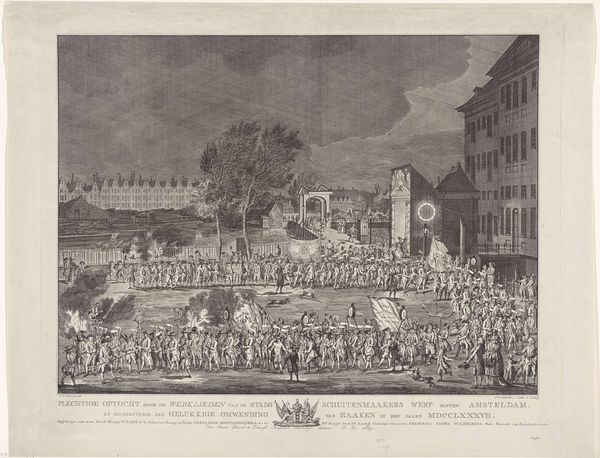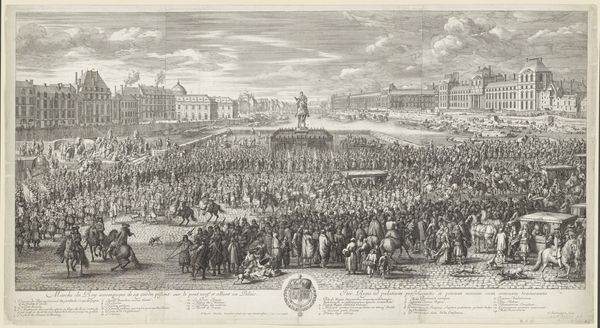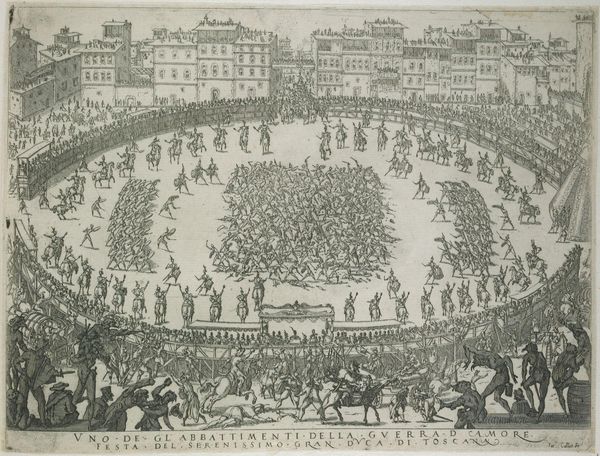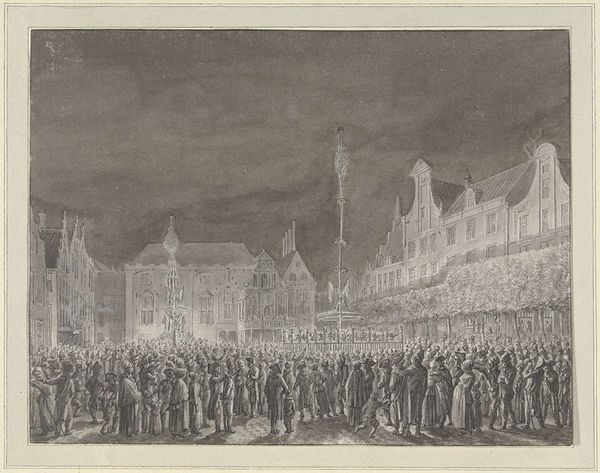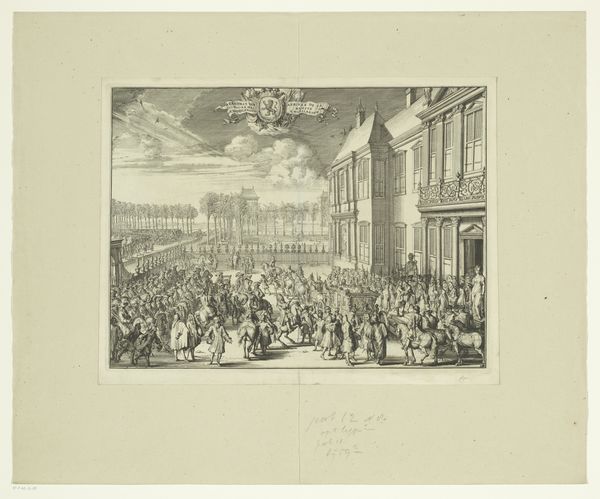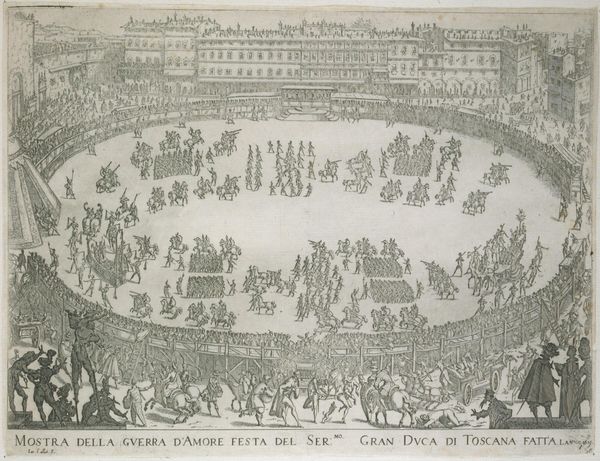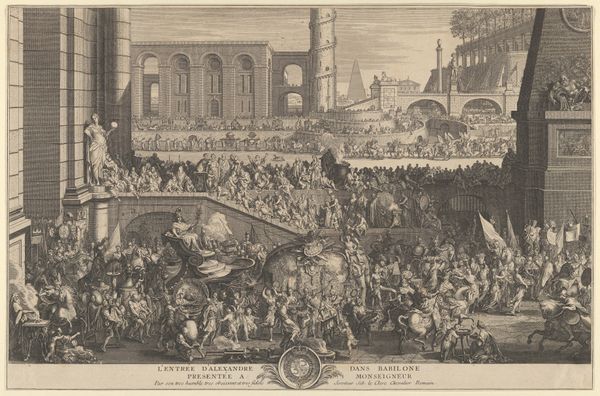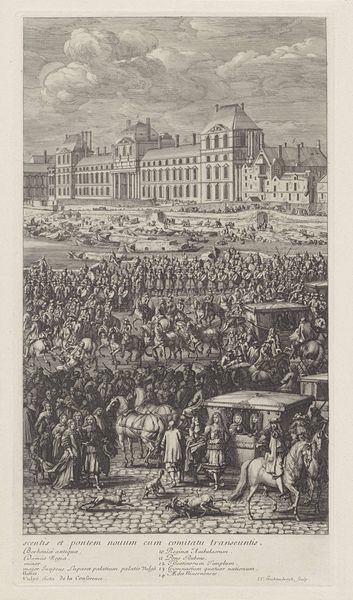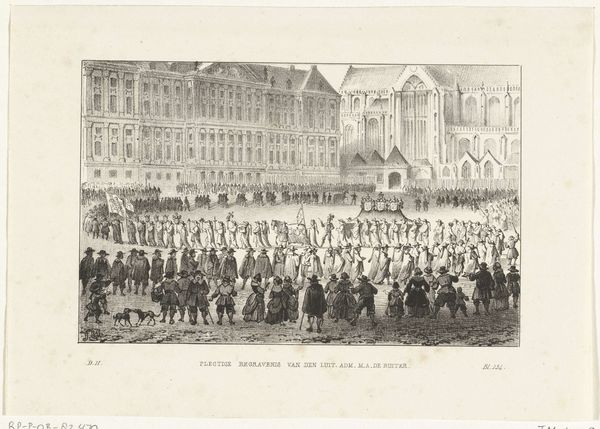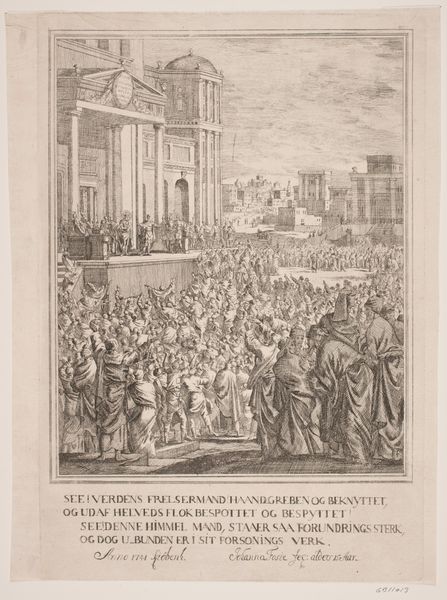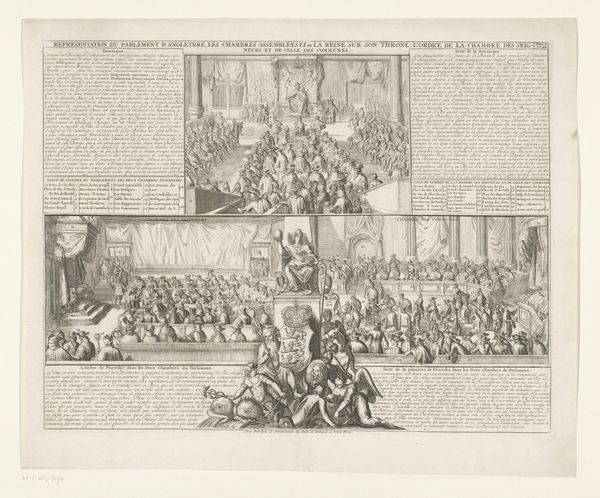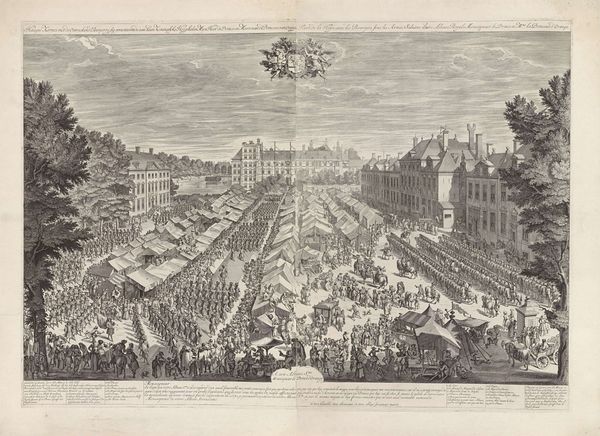
Optocht van de werklieden van de Admiraliteits Scheepstimmerwerf, 1787 1787
0:00
0:00
Dimensions: height 570 mm, width 680 mm
Copyright: Rijks Museum: Open Domain
Editor: This engraving by Johan Christoffel Schultsz, titled "Procession of the Workmen of the Admiralty Shipyard, 1787", really captures a specific historical moment. It almost feels like a photograph, though from so long ago, with such detail. What do you see in this piece? Curator: This image speaks volumes about the power dynamics of the late 18th century. The opulence of the architecture versus the sheer number of laborers reminds me of current debates about income inequality and fair labor practices. Editor: You see social commentary in this parade? Curator: Absolutely. This isn’t just a depiction of a parade; it’s a record of class, power, and perhaps even nascent resistance. What are the workers celebrating? Who benefits from their labor, and at what cost? Who is invited to watch? Editor: Good point. The event itself could be celebratory but the documentation reveals deeper questions about worker rights in Amsterdam at that time? Curator: Precisely. Think about how art, even seemingly celebratory art, becomes a lens through which to analyze historical inequities and potentially inspire conversations about contemporary issues. Does considering it an early form of photojournalism change our reading? Editor: It gives the whole image a different kind of gravity, when viewing it as a depiction of a social system! It adds another layer to this engraving, turning a parade into a potent conversation starter. Curator: Exactly. Art serves as a record, a challenge, and a provocation to reflect on our shared history and imagine more equitable futures.
Comments
No comments
Be the first to comment and join the conversation on the ultimate creative platform.
